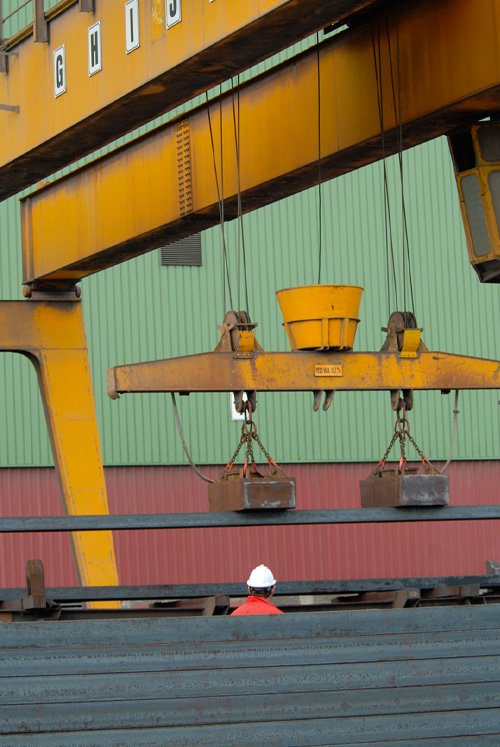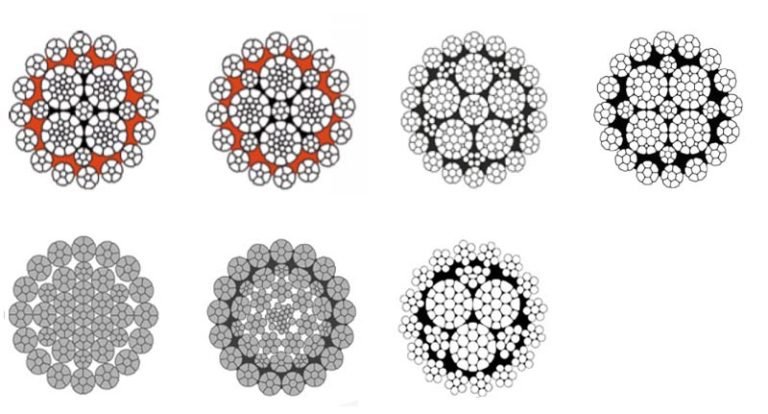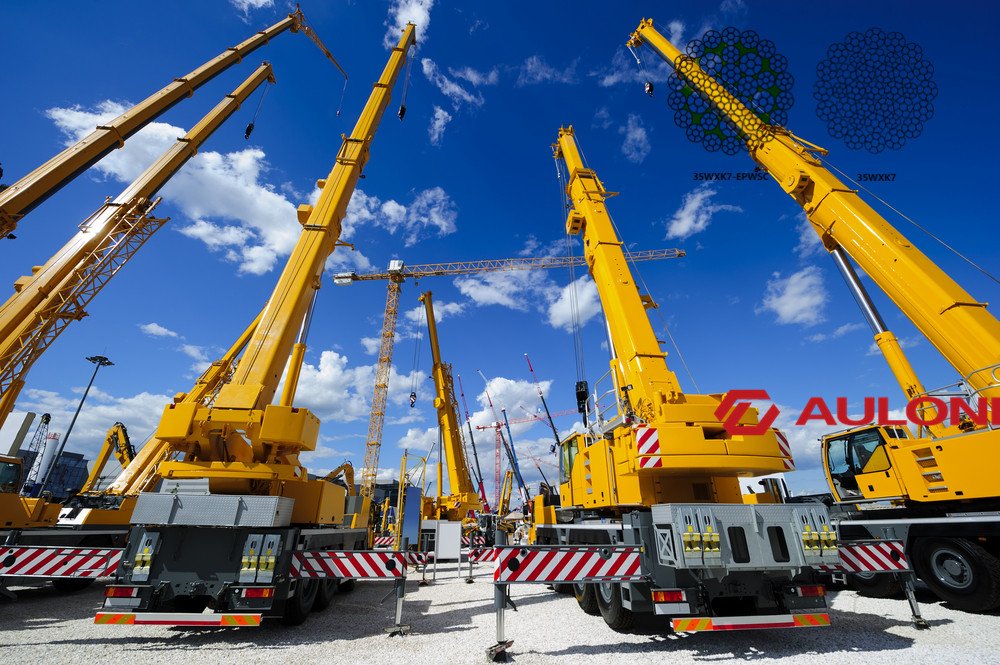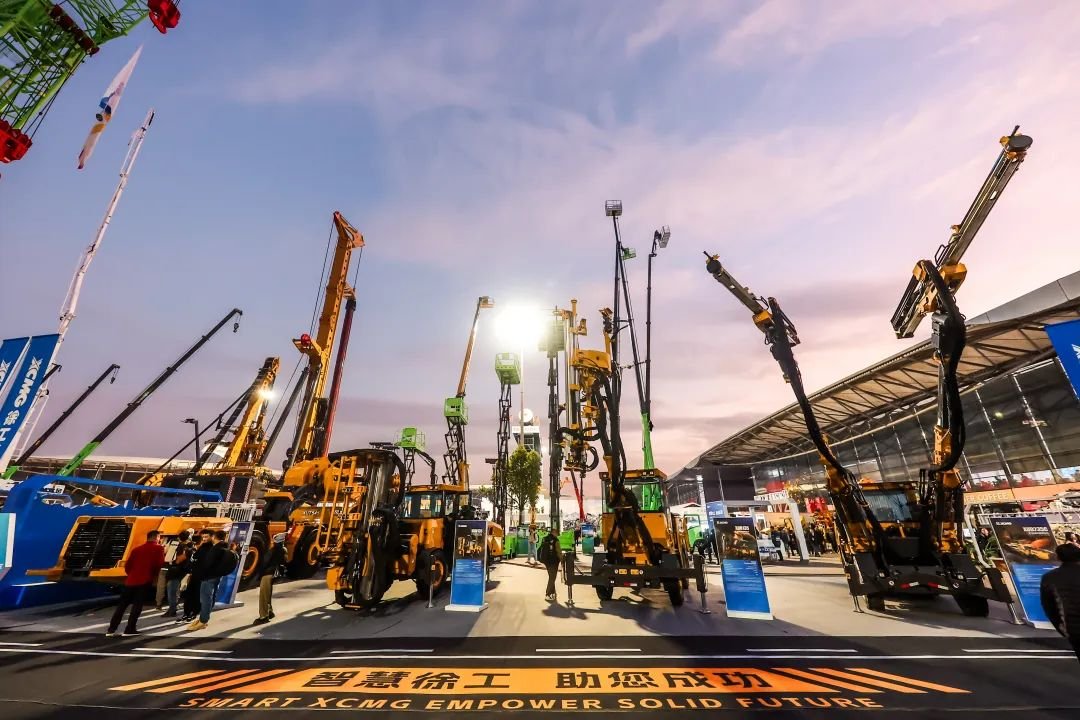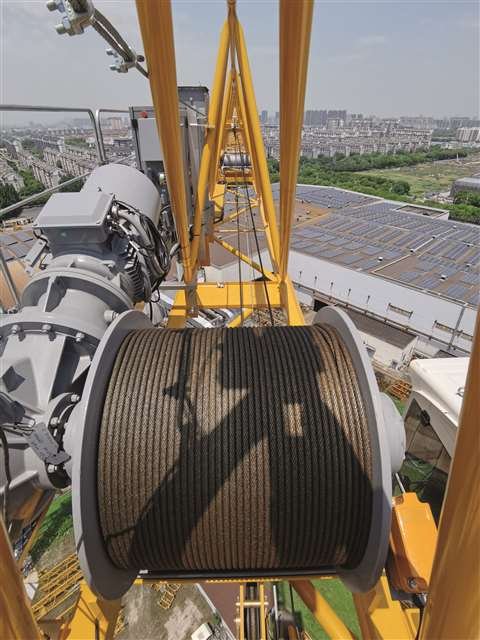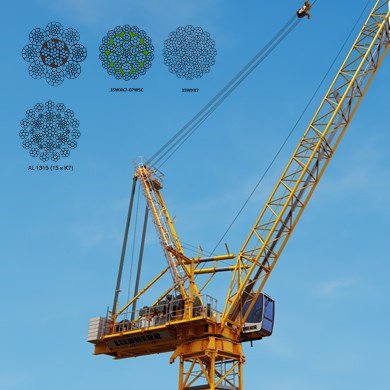Are you facing challenges with wire rope twisting? Do you struggle with maintaining lifting stability? These issues can severely impact your project’s safety and efficiency.
Class 19×7 rotation resistant wire rope is designed to minimize spinning and twisting. It achieves this by balancing the lays of wires and strands. This leads to more stable lifting and reduced risks.
I know firsthand how crucial reliable wire rope is. I once saw a project’s timeline double because of constant rope issues. It was frustrating for everyone involved. That experience drove me to understand wire rope deeply.
What Makes 19×7 Wire Rope So Special for Preventing Rotation?
Opening a new project always brings excitement. But it also brings challenges. One common challenge I’ve seen is rope rotation. This can seem like a small issue. But it can cause major headaches.
The unique construction of 19×7 wire rope helps prevent rotation. It has inner layers laid in a different direction than outer layers. This counteracts torque and keeps loads stable.
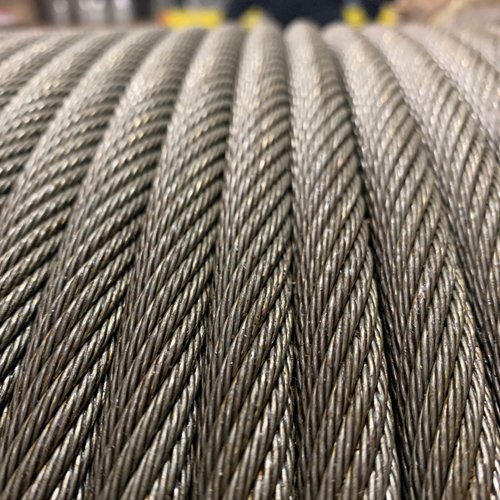
How Does Its Construction Work?
Imagine two forces pushing against each other. That is how 19×7 wire rope works.
- Inner Strands: These strands are laid in one direction. They create a natural twisting force.
- Outer Strands: These strands are laid in the opposite direction. They create an opposing twisting force.
- Balance: These opposing forces largely cancel each other out. This reduces the rope’s tendency to rotate. This balance is key.
Why is This Design Better Than Standard Ropes?
Standard wire ropes, like 6×19 or 6×36, have all strands laid in the same direction. When they bear a load, they naturally want to unlay. This causes the hook or load to spin. For example, if you lift a heavy beam with a standard rope, it might start to twirl. This spinning is risky. It can cause the load to hit something. It can also make it hard to position the load correctly.
In contrast, 19×7 rope’s design minimizes this effect. It means your load stays more stable. This is especially important for long lifts or precision placements. Think of lifting a delicate piece of machinery. You need it to stay perfectly still. A 19×7 rope helps achieve this. It makes the job safer and faster.
What Are the Key Benefits of This Rotation Resistance?
The main benefit is safety. When a load does not spin, the risk of accidents goes down.
- Increased Safety: Less rotation means less chance of the load hitting personnel or structures. It also means less chance of the rope kinking. Kinking can severely damage the rope.
- Improved Efficiency: Operators can make lifts faster. They do not have to fight against the load spinning. This saves time on projects. Time is money.
- Longer Rope Life: Reduced rotation also means less internal stress on the rope. This can extend the rope’s lifespan. Less wear and tear means fewer replacements. This saves costs in the long run.
- Precision Lifting: For sensitive operations, stability is crucial. Examples include placing pre-fabricated sections or delicate equipment. 19×7 rope ensures the load stays oriented correctly.
My factory, Aulone, has seen this firsthand. Our products, like the 19×7 wire rope, are designed for high performance. We focus on high tensile strength and breaking loads. Our ropes meet standards like EN12385-4. This ensures they perform as expected in the field.
Where is 19×7 Rotation Resistant Wire Rope Most Effectively Used?
I often get asked about the best applications for different ropes. For 19×7 rotation resistant wire rope, the answer is clear. It shines in specific scenarios. These are usually situations where load control is paramount.
19×7 rotation resistant wire rope excels in applications where loads are free to rotate. It is best used for single-part lines on mobile cranes and tower cranes. It is also ideal for hoisting applications in marine or mining environments.

Let me tell you more about common uses and why this rope is perfect for them.
What are Typical Applications?
This type of wire rope is a workhorse in industries where precision and safety are critical.
- Mobile Cranes: Many mobile cranes use a single fall line. Here, 19×7 rope is essential. It stops the hook block from spinning. This makes lifting much safer and more controlled.
- Tower Cranes: Similar to mobile cranes, tower cranes often have long lift heights. A spinning load would be a huge problem. 19×7 rope keeps everything aligned.
- Overhead Cranes: For certain overhead crane operations, a non-rotating rope can be very beneficial. Especially when lifting delicate items or working in tight spaces.
- Marine Applications: Ship cranes and offshore rigs often lift loads in dynamic environments. Stability is key. 19×7 rope helps maintain control, even with waves or strong winds.
- Mining Operations: In deep mine shafts, hoisting systems benefit greatly from rotation resistant ropes. The long lift distances make rotation a major hazard. Our mining wire rope products are designed for such tough conditions.
What Are the Ideal Operating Conditions for This Rope?
Class 19×7 wire rope performs best under certain conditions.
- Single Line Applications: It is most effective when used as a single line. When you use multiple lines, the rope’s rotation resistance is less critical.
- Unguided Loads: If the load is free to spin, 19×7 is your best choice. If the load is guided, like in an elevator shaft, a non-rotating rope is not as crucial. Our elevator wire ropes are designed for stability within guided environments.
- Long Lift Heights: The longer the lift, the more important rotation resistance becomes. A small twist at the winch can become a large rotation at the hook.
- Precision or Delicate Lifts: When the load must be placed exactly, 19×7 helps. It removes the unpredictable spinning element.
My team and I have worked with customers globally. From Singapore to Australia, they rely on our ropes. For example, our galvanized wire rope and stainless steel wire rope meet diverse needs. They withstand harsh environments. I personally ensure that our ropes, whether for marine or general use, uphold the highest quality. We can even provide BV & CE certificates if needed.
How Does 19×7 Wire Rope Compare to Other Constructions in Terms of Performance and Durability?
When choosing a wire rope, performance and durability are top concerns. You want a rope that lasts. You also want a rope that performs its job well. Different rope constructions offer different benefits. Understanding these differences helps in making the right choice.
19×7 wire rope offers superior rotation resistance and stability under load. This can enhance safety and efficiency. However, its complex construction may result in slightly less strength or flex fatigue resistance compared to some standard ropes.
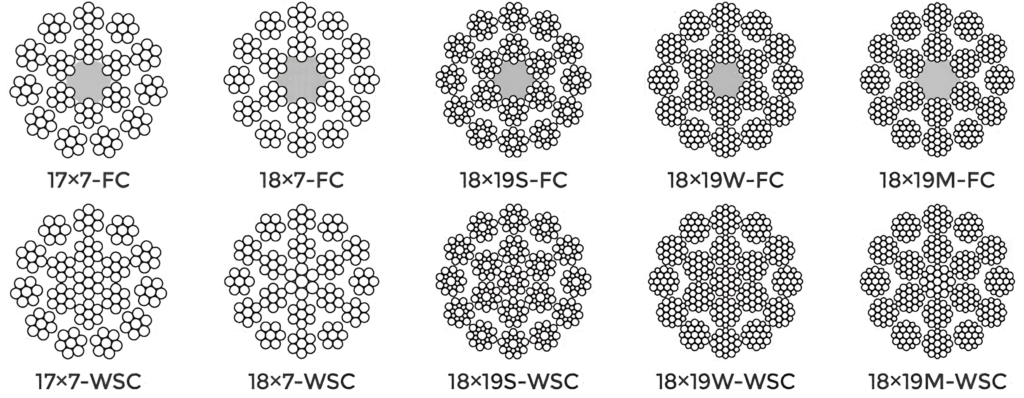
Let’s compare it to other common wire rope types. This will help you see where 19×7 fits in.
19×7 vs. 6×19 and 6×36 Standard Ropes
Standard ropes like 6×19 and 6×36 are very common. They are often used for general lifting.
- Rotation Resistance: 19×7 is far superior here. Standard ropes will twist under load. This is their main drawback for free-hanging applications.
- Flexibility: 6×36 ropes are usually more flexible than 19×7. This is due to their larger number of wires per strand. 19×7 is still flexible enough for many applications.
- Strength: For a given diameter, a standard 6×19 or 6×36 rope might have a slightly higher breaking strength. This is because they have more steel mass dedicated to simple tensile strength. 19×7 uses some of its design to counteract torque. However, 19×7 still offers high tensile strength. We ensure this with our manufacturing processes.
- Cost: Standard ropes are often less expensive. This is because their construction is simpler. 19×7 rope requires more complex manufacturing. This can lead to a higher initial cost. But the increased safety and efficiency often outweigh this.
19×7 vs. 35×7 Rotation Resistant Ropes
35×7 is another type of rotation resistant rope. It is even more resistant to rotation than 19×7.
- Rotation Resistance: 35×7 offers even greater rotation resistance. It has more strands and layers that oppose each other.
- Flexibility: 35×7 is typically more flexible due to its higher wire count.
- Sheave Compatibility: Because of their extreme flexibility and construction, 35×7 ropes often require larger sheave diameters. Using them with smaller sheaves can lead to faster wear.
- Strength: 35×7 might have a slightly lower breaking strength for its size compared to 19×7. This is again due to its complex construction prioritizing rotation resistance.
- Cost: 35×7 is usually more expensive than 19×7. Its manufacturing is even more complex.
Factors Affecting Durability and Performance
Several factors impact how long any wire rope lasts.
- Proper Installation: Incorrect installation can cause premature wear. This includes not winding it properly on the drum.
- Sheave Condition: Worn or grooved sheaves can damage the rope. They can cause abrasion and crushing.
- Lubrication: Regular lubrication is vital. It reduces friction between wires and strands. This prevents corrosion and wear. Our plastic impregnated ropes offer enhanced internal lubrication.
- Load Conditions: Overloading or shock loading drastically shortens rope life.
- Environmental Factors: Exposure to corrosive elements, like saltwater, can degrade rope quickly. This is why our marine wire rope is specially treated. Our galvanized wire ropes also resist corrosion better.
- Inspection and Maintenance: Frequent inspections help identify wear early. This allows for timely replacement.
At Aulone, we focus on high-quality manufacturing. Our ropes are durable. They can withstand tough conditions. We provide BV, CE, RMRS, DNV, and ABS certificates if clients need them. We also offer customizable logos. This shows our commitment to quality.
Conclusion
Class 19×7 rotation resistant wire rope helps your operations, especially for free-hanging loads. It greatly improves safety and efficiency. This leads to reduced risks and increased productivity.

